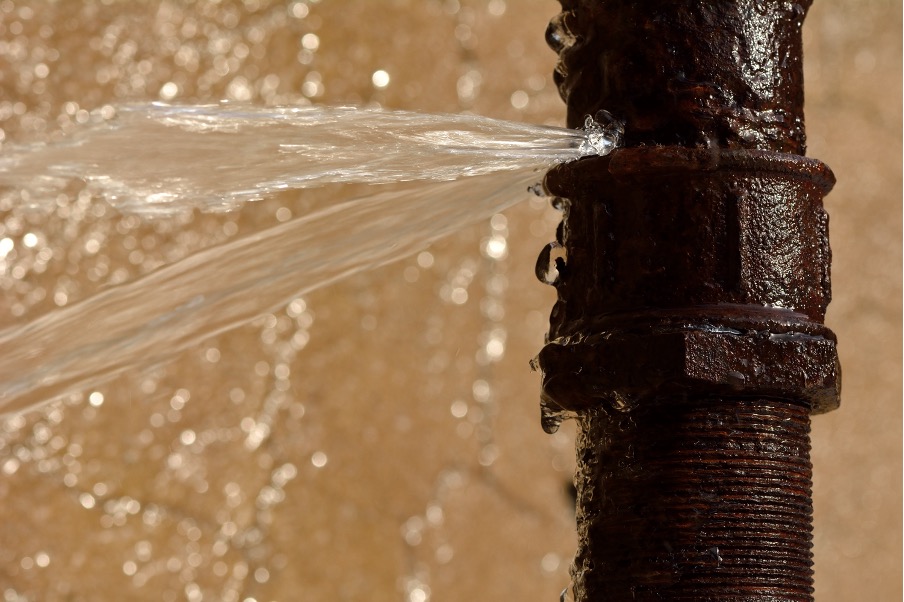Exactly how to Locate and Repair Work Water Leaks-- A Comprehensive Guide
Exactly how to Locate and Repair Work Water Leaks-- A Comprehensive Guide
Blog Article
The content below pertaining to Locating water leaks is immensely interesting. Give it a try and draw your own personal results.

Early discovery of dripping water lines can minimize a possible calamity. Some small water leakages might not be visible.
1. Examine the Water Meter
Every residence has a water meter. Checking it is a surefire way that assists you discover leakages. For beginners, shut off all the water sources. Guarantee nobody will purge, use the tap, shower, run the cleaning equipment or dishwasher. From there, go to the meter and also watch if it will certainly change. Since no person is utilizing it, there need to be no motions. If it moves, that shows a fast-moving leak. Likewise, if you identify no changes, wait an hour or more and also inspect back once again. This suggests you may have a slow-moving leakage that could even be below ground.
2. Inspect Water Consumption
If you spot abrupt modifications, regardless of your usage being the same, it indicates that you have leaks in your plumbing system. An unexpected spike in your expense shows a fast-moving leakage.
At the same time, a constant rise each month, despite having the same routines, reveals you have a sluggish leakage that's also gradually escalating. Call a plumber to thoroughly check your building, specifically if you really feel a cozy location on your floor with piping underneath.
3. Do a Food Coloring Examination
When it pertains to water intake, 30% originates from commodes. Examination to see if they are running correctly. Decrease specks of food color in the storage tank as well as wait 10 mins. If the color in some way infiltrates your bowl throughout that time without flushing, there's a leak between the tank as well as dish.
4. Asses Outside Lines
Don't fail to remember to inspect your outside water lines too. Needs to water permeate out of the connection, you have a loosened rubber gasket. One small leakage can waste tons of water as well as increase your water expense.
5. Assess the scenario as well as examine
House owners must make it a habit to inspect under the sink counters and even inside cabinets for any kind of bad odor or mold and mildew development. These two red flags indicate a leak so timely attention is called for. Doing routine assessments, even bi-annually, can conserve you from a major trouble.
Examine for stainings as well as compromising as many pipelines as well as home appliances have a life span. If you suspect dripping water lines in your plumbing system, don't wait for it to intensify.
Early detection of dripping water lines can alleviate a potential calamity. Some tiny water leaks may not be noticeable. Inspecting it is a proven way that assists you uncover leaks. One small leakage can squander tons of water as well as increase your water expense.
If you believe leaking water lines in your plumbing system, do not wait for it to escalate.
WARNING SIGNS OF WATER LEAKAGE BEHIND THE WALL
PERSISTENT MUSTY ODORS
As water slowly drips from a leaky pipe inside the wall, flooring and sheetrock stay damp and develop an odor similar to wet cardboard. It generates a musty smell that can help you find hidden leaks.
MOLD IN UNUSUAL AREAS
Mold usually grows in wet areas like kitchens, baths and laundry rooms. If you spot the stuff on walls or baseboards in other rooms of the house, it’s a good indicator of undetected water leaks.
STAINS THAT GROW
When mold thrives around a leaky pipe, it sometimes takes hold on the inside surface of the affected wall. A growing stain on otherwise clean sheetrock is often your sign of a hidden plumbing problem.
PEELING OR BUBBLING WALLPAPER / PAINT
This clue is easy to miss in rooms that don’t get much use. When you see wallpaper separating along seams or paint bubbling or flaking off the wall, blame sheetrock that stays wet because of an undetected leak.
BUCKLED CEILINGS AND STAINED FLOORS
If ceilings or floors in bathrooms, kitchens or laundry areas develop structural problems, don’t rule out constant damp inside the walls. Wet sheetrock can affect adjacent framing, flooring and ceilings.
https://www.servicemasterbyzaba.com/blog/how-to-detect-water-leakage-in-walls/

We had been made aware of that article on Locating water leaks from someone on another web address. Sharing is good. You never know, you might be helping someone out. Thanks a lot for your time. Visit again soon.
Report this page